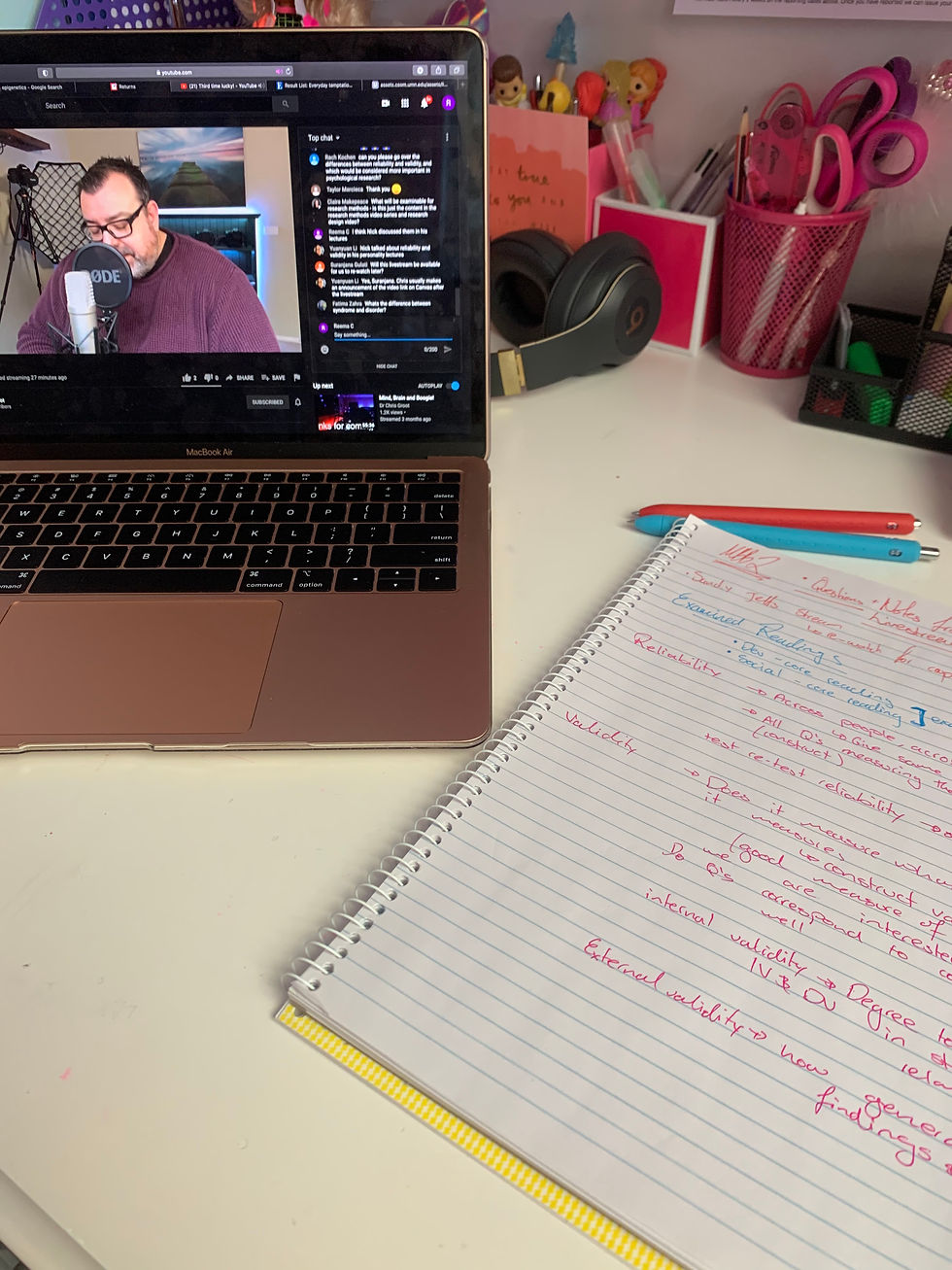3. Goal Development
- reema13c
- Nov 12, 2020
- 4 min read
According to Doran (1981), setting a goal involves ensuring the performance goal mostly fits with the SMART and beyond SMART criteria. SMART relates to a goal being specific, measurable, achievable, realistic and times (Doran, 1981). A criterion of beyond SMART is an ‘authentic’ goal that is, aiming to achieve a goal that aligns with and expresses your strengths and values. In the CliftonStrengths finder framework, strengths can be defined as talents highlighted by an individual’s performance in work or school (Biswas-Diener, Kashdan, & Lyubchik, 2016). In addition, values such as love and compassion, are based on what an individual believes is most important in their life. Strengths knowledge and strengths use of CliftonStrengths is associated with greater academic performance for first-year undergraduate university students (Allan, Owens, Kim, Douglass, & Hintz, 2019). Moreover, other studies also find that using one’s strengths contributes to goal progress as well as basic psychological need-satisfaction for competence, relatedness and autonomy, and greater wellbeing. Therefore, I designed my goal around the ‘authentic’ beyond SMART criteria whilst also considering my best possible self.
Best Possible Self (BPS) intervention developed by King (2001) involves an individual to envision and describe their ideal self in the future with positive thinking (King 2001 as cited by Altintas, Karaca, Moustafa & El Haj, 2010). In the BPS activity I completed, informed by King (2001), I reflected on my CliftonStrengths and values when reflecting on my desired future self. In the original experiment, King (2001) found that participants who engaged in BPS interventions were more likely to experience benefits of positive affect, wellbeing and physical health compared to those who did not do the intervention (King 2001 as cited by Altintas et al., 2010). In establishing my performance goal, I considered my strengths, values and BPS.
I value connection with classmates and teaching staff, therefore when working towards my subgoal of developing networks, I’m working with and endorsing my value of connecting with others in my field. When establishing these relationships, this subgoal also allows me to also use my strength of communication, relator and woo. Relator involves forming close relationships and working in a team to achieve a goal, whilst woo refers to enjoying the challenge of establishing a connection with others (Ruth, 2007). Furthermore, I aimed to approach my performance goal with my value of balance, that is, ability to maintain balance between study, relationships and enjoyable activities.
According to the dualistic model of passion, harmonious passion is the strong desire to engage in an activity that one is passionate about whilst also allowing for flexibility and balance with other domains in one’s life (Vallerand et al., 2003). ‘Harmonious’ is another beyond SMART criteria I considered when planning for my tactics to achieve my goal. Studies suggest harmonious passion is linked to deliberate practice and increased performance and enhances wellbeing (Vallerand et al., 2003). When designing tactics to achieve my subgoal of completing all requirements prior to deadlines, in my weekly planner, monthly calendar and to-do list, I also incorporated time to do activities I enjoy such as watching my favourite shows, spend time with loved family and friends, and my skin-care routine. My main performance goal allows for such flexibility if planned to approach with intended balance and harmonious passion.

Although my performance goal is centred around a high mark, it is an intrinsically oriented goal due to my passion and motivation behind my aim. According to the continuum of motivation regulations from Self-Determination Theory (SDT), also known as the Organismic Integration Theory, there are varying levels or types of intrinsic motivation that a goal can fall under (Ryan & Deci, 2000). An intrinsically oriented goal involves high quality motivation and is an area of growth that is genuinely interesting and enjoyable for an individual to work towards (Ryan & Deci, 2000). A goal that is enjoyable and/or interesting is another beyond SMART criteria that relates to my chosen goal. Considering this framework within SDT, I would consider my performance goal of getting above 80% in MBB2 an autonomous form of motivation called ‘integrated regulation’ (Ryan & Deci, 2000). ‘Integrated regulation’ is the flavour of motivation whereby the goal is something you value overall and is a part of your identity (Ryan & Deci, 2000). At first glance, an outsider may not consider or understand how my goal is intrinsically oriented nor is a part of my identity and core values. However, coming from a lower-class migrant family, a good mark for me, is not just a good mark, it is an honourable step forward for my entire past and present family. Due to lack of income, language, class and ability, it has taken decades and generations until one person in my family, being me, is accepted into such a prestige position at the University of Melbourne. Furthermore, I view my mark not just as a number, rather, as a step closer to working with children as a psychologist, helping and supporting other families like mine. I have a brother with a rare and severe disability, so I deeply value my step closer in the field as my way to fight for him. Hence, this goal to me is not merely just a mark, it is encouragement and motivation to continue pursuing my passions, identity and values thus, my goal fits under the integrated regulation type of motivation.


In the following post, I will be reflecting on how I worked towards my goal, including discussions around successes, challenges, and lessons learned...


Comments